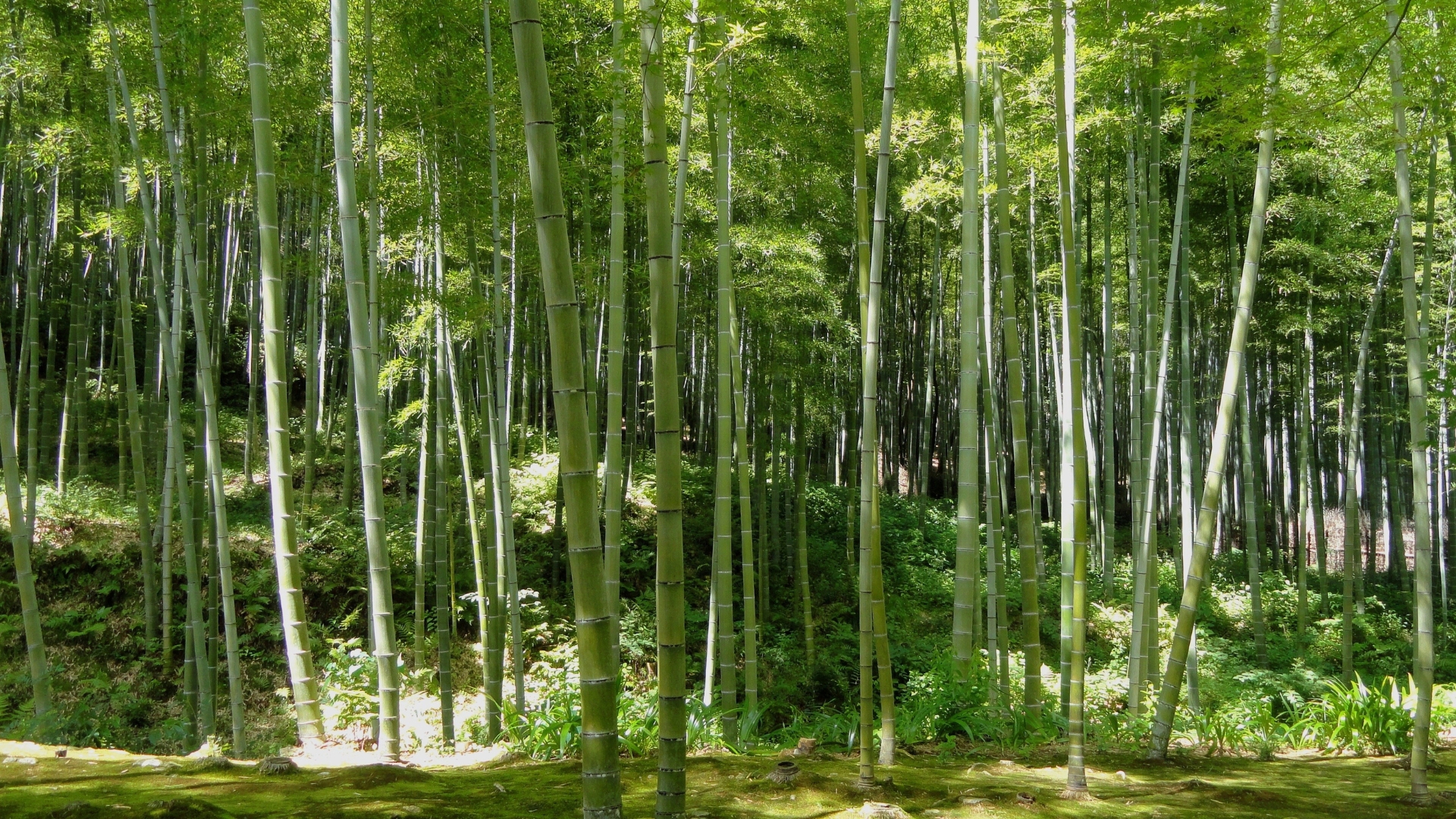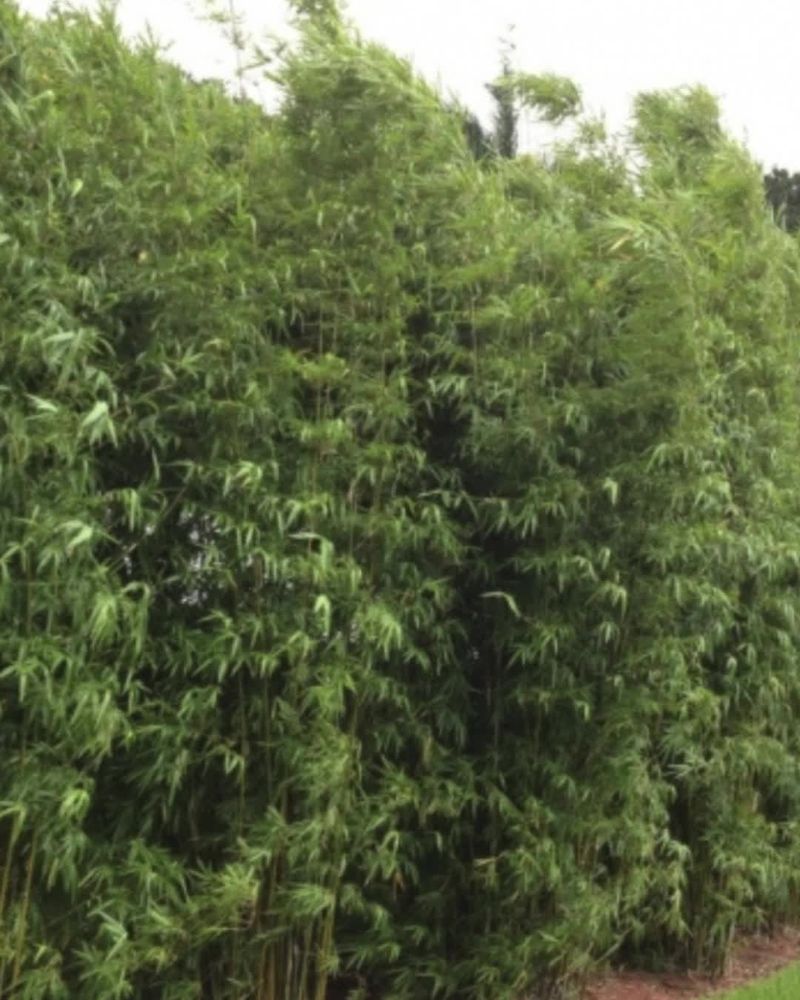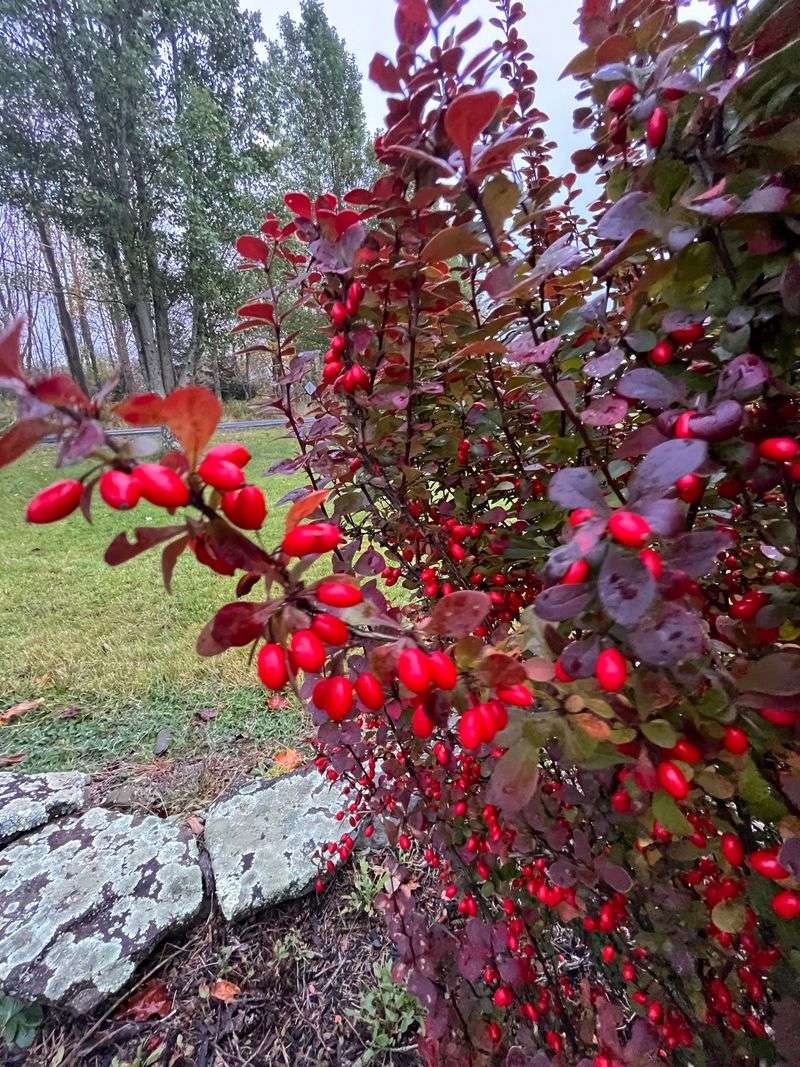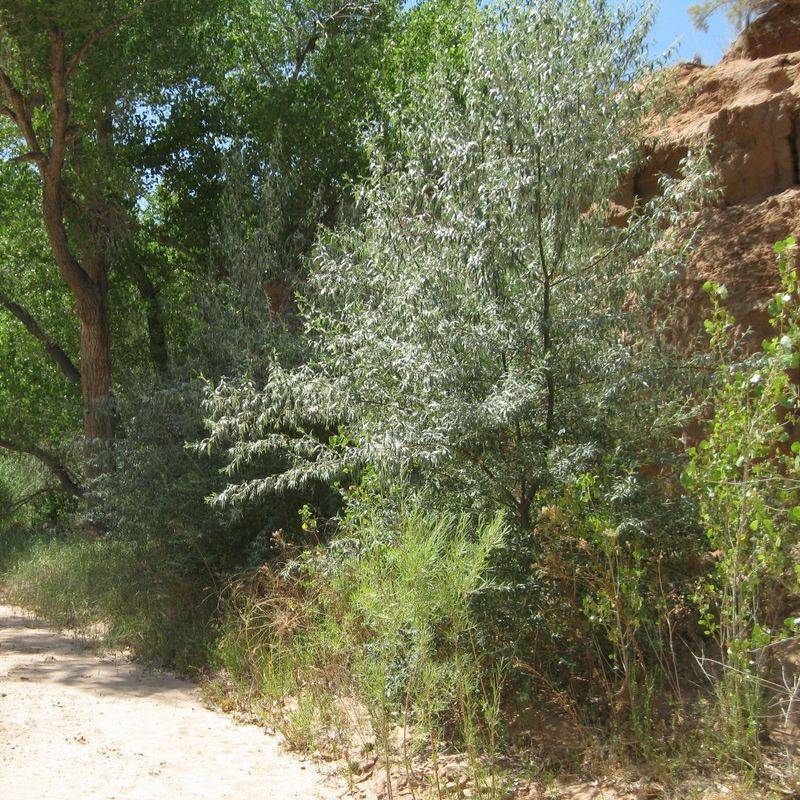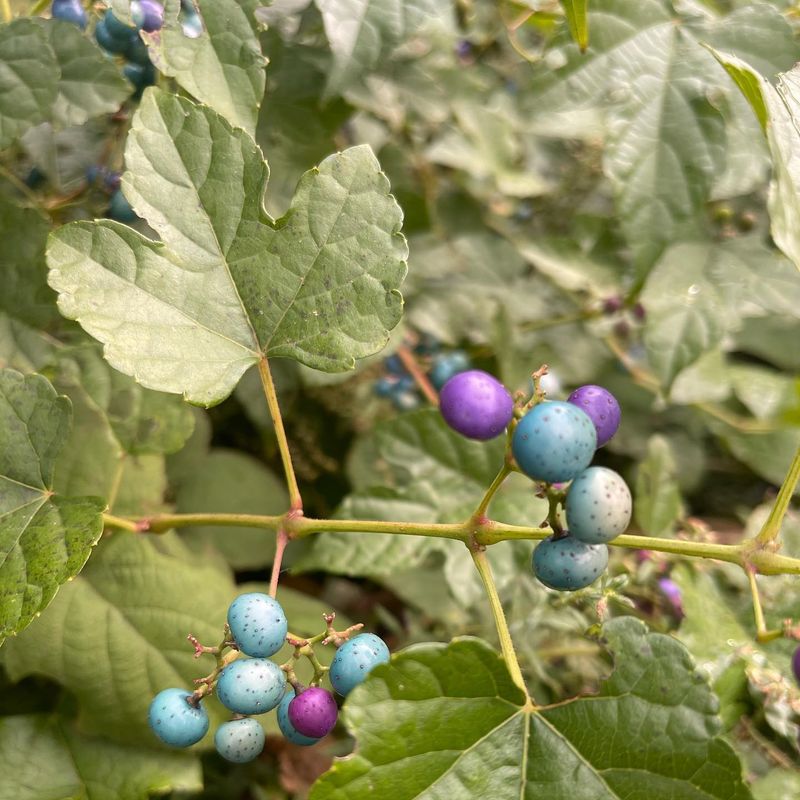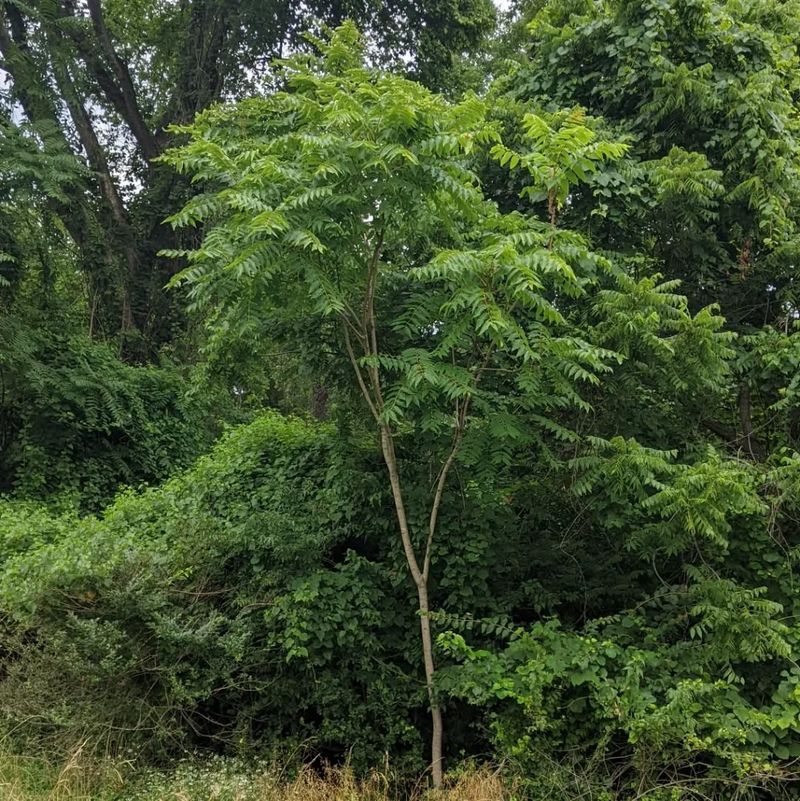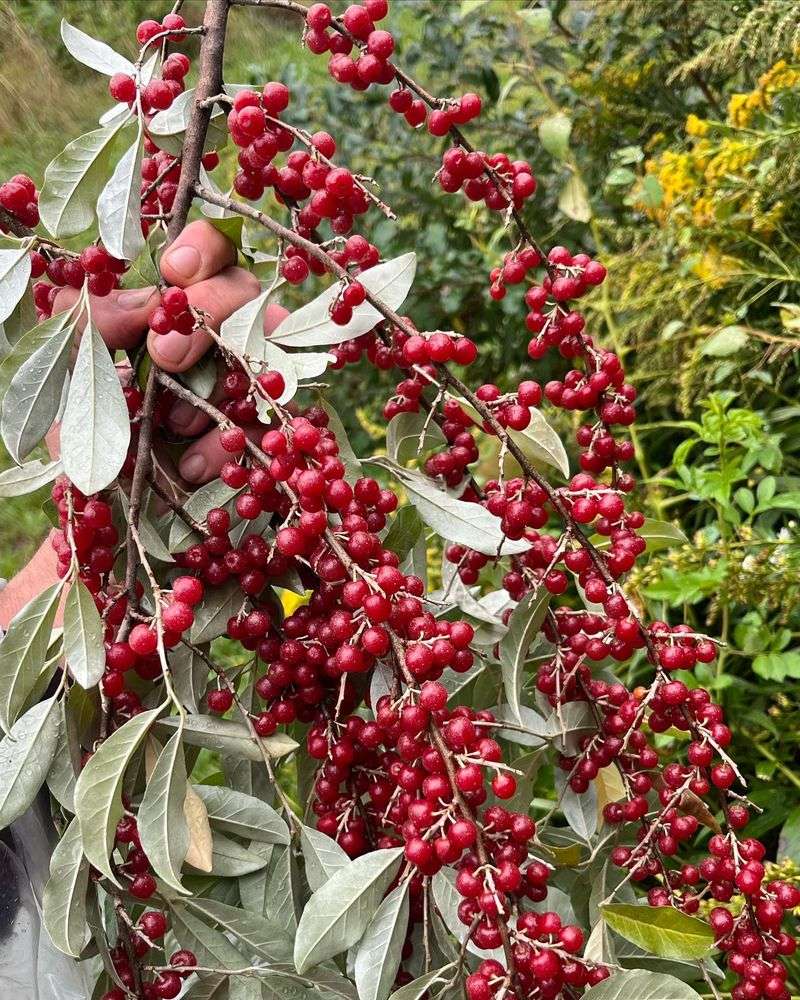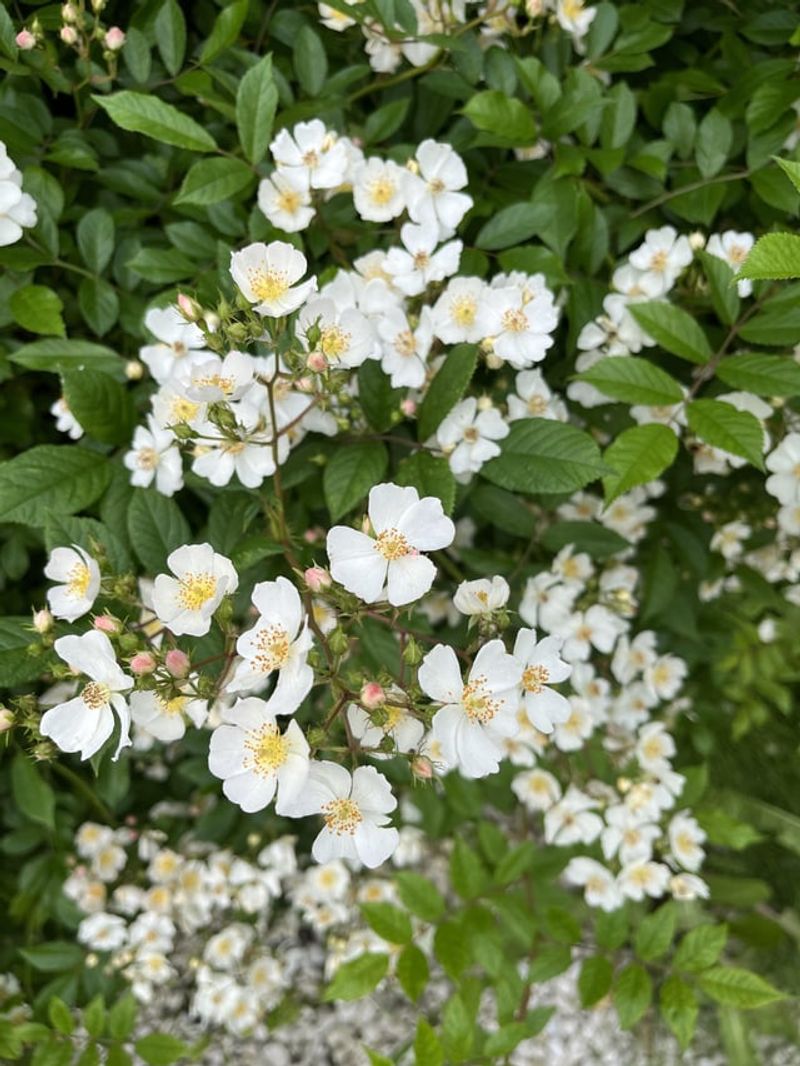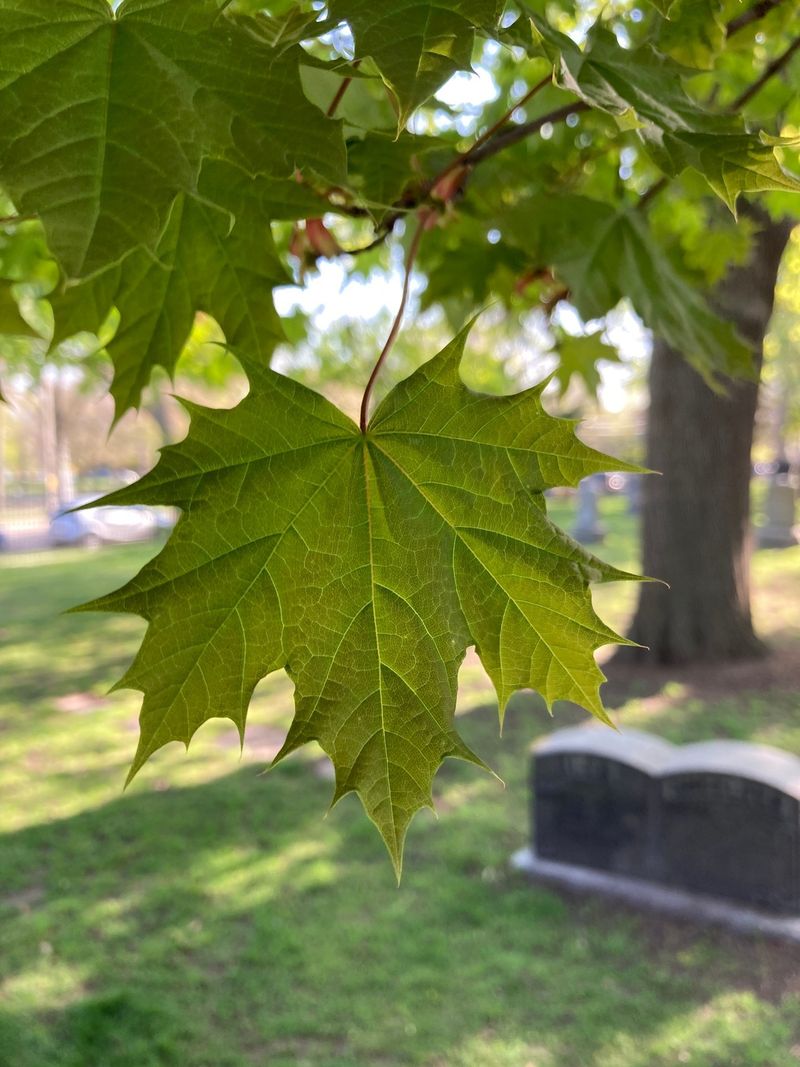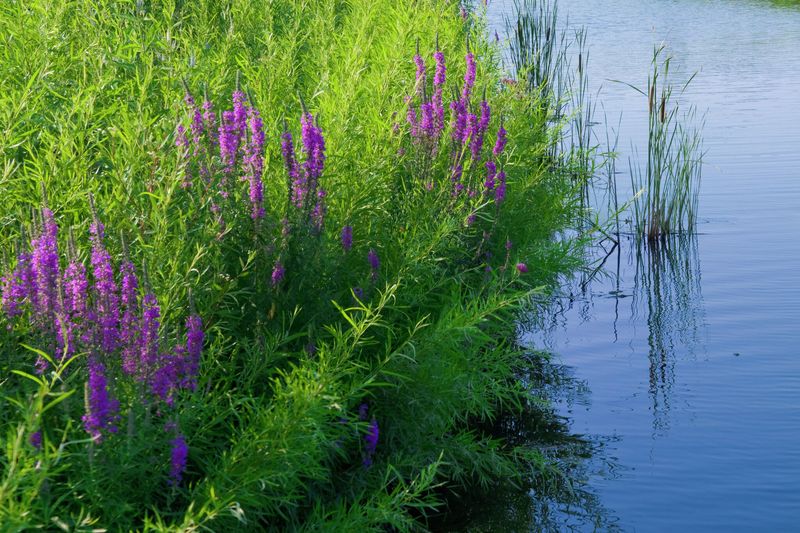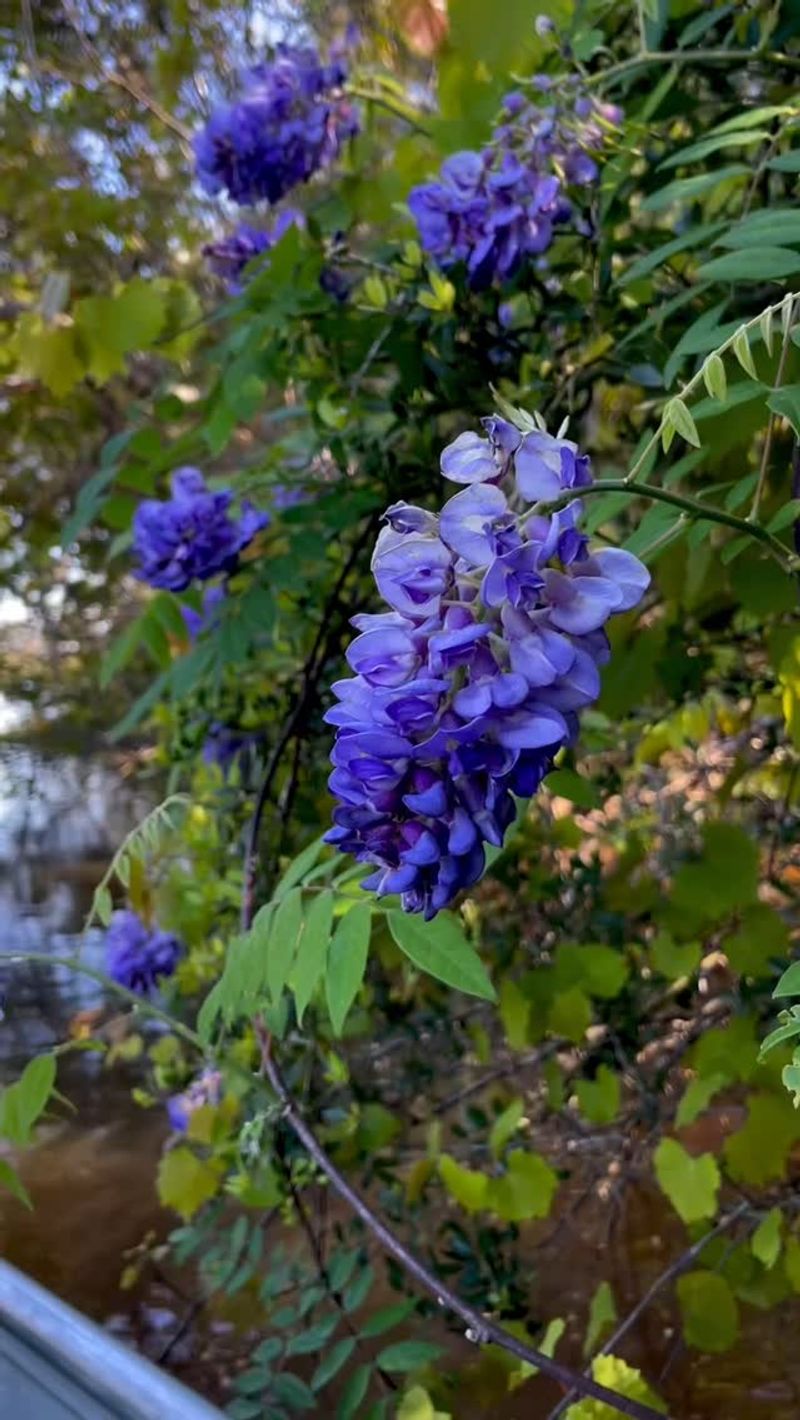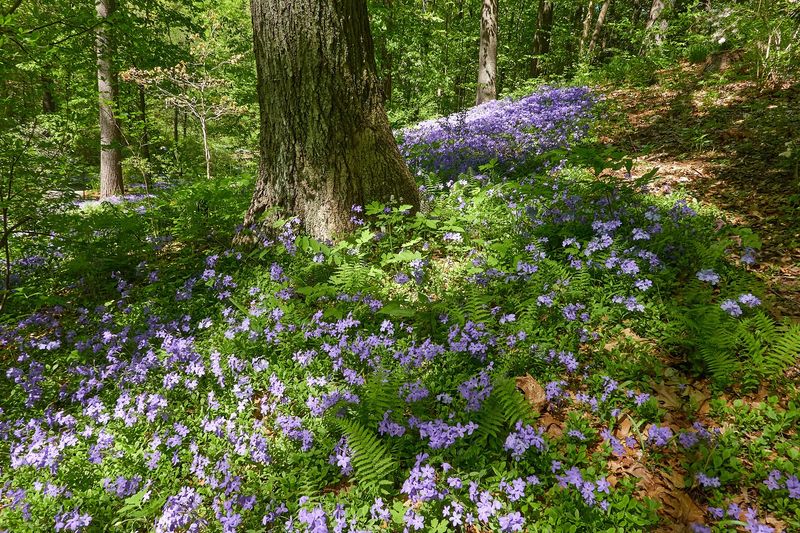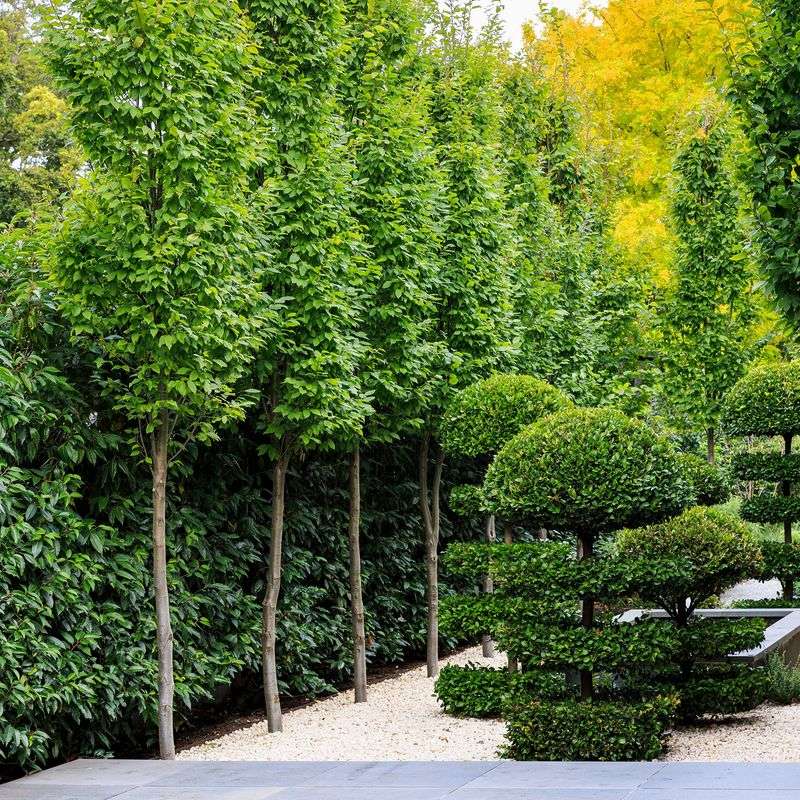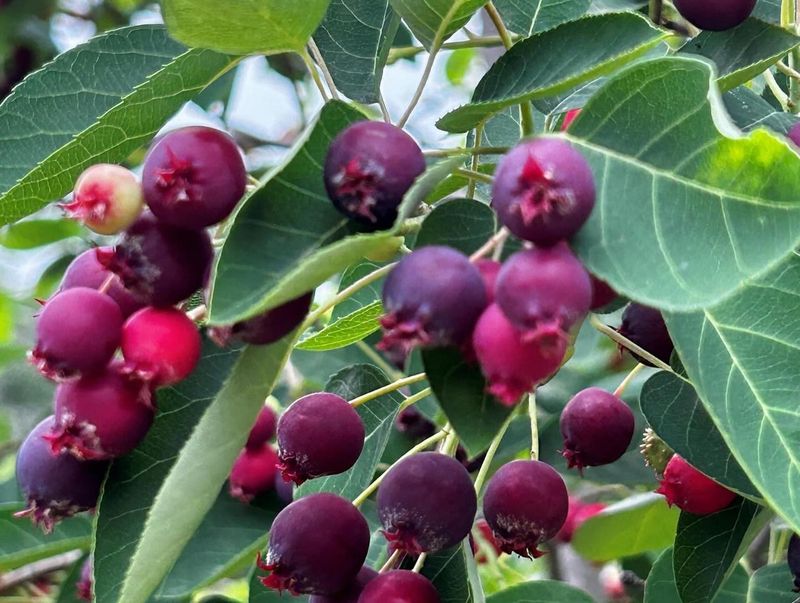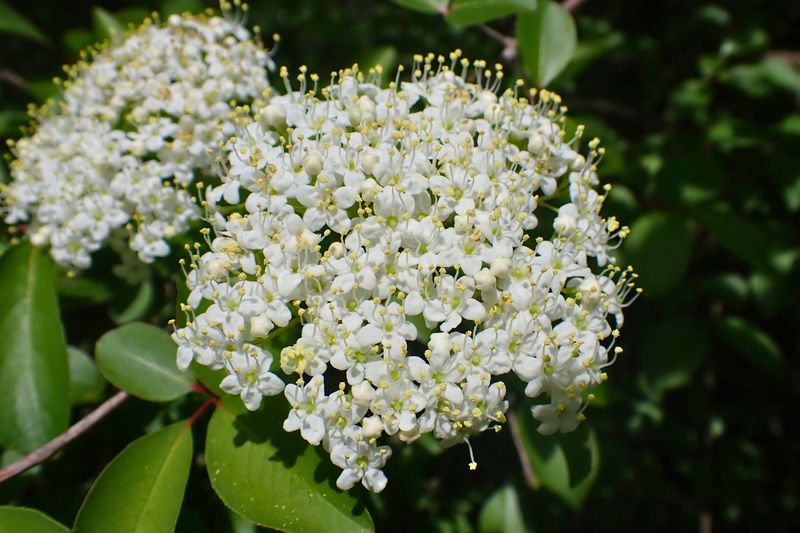I’ve fallen for the lure of fast-growing privacy plants before, only to watch them spread like wildfire and take over my yard. Some of these invaders might seem like a quick solution for privacy, but they can quickly become more of a hassle than they’re worth.
Don’t worry, though—I’ve found some amazing alternatives that give you the same coverage without the headache. These picks will keep your space private and peaceful, without becoming a gardening nightmare.
Ready to ditch the invasive plants and create a more manageable, lush retreat? Let’s get started!
1. Bamboo Gone Wild
Running bamboo varieties can spread up to 15 feet annually, creating an underground network of roots that’s nearly impossible to remove. Many homeowners discover this nightmare too late when bamboo shoots start popping up in their vegetable gardens or under their decks.
The removal process often requires professional help and can cost thousands of dollars. Even small fragments left behind can regenerate, making this seemingly elegant privacy screen a long-term battle you didn’t sign up for.
2. English Ivy’s Sneaky Takeover
What starts as an elegant wall covering quickly becomes a garden monster. English ivy climbs trees, choking them of sunlight while its weight can bring down weakened specimens during storms. The aggressive vines also damage mortar between bricks and find their way under siding.
Birds spread the berries far and wide, allowing ivy to invade natural woodlands. In many states, it’s now classified as a noxious weed that’s prohibited from sale because of its devastating ecological impact.
3. Japanese Barberry’s Thorny Problem
Those attractive red berries hide a troubling secret. Japanese barberry creates ideal humidity conditions for ticks that carry Lyme disease, potentially increasing health risks around your property. Its dense growth crowds out native plants while providing little habitat value for local wildlife.
The plant’s numerous thorns make removal particularly challenging once established. Many states have banned this shrub due to its invasive tendencies, yet it continues to be sold in some garden centers under various cultivar names.
4. Russian Olive’s Deceptive Beauty
Don’t be fooled by the silvery foliage and fragrant flowers. Russian olive trees quickly escape cultivation and crowd out native vegetation along waterways. Their extensive root systems make them extremely difficult to remove once established.
Birds spread the seeds widely, creating new infestations miles away from the original planting. In western states particularly, Russian olive has transformed riparian ecosystems, reducing biodiversity and altering natural water flows that native species depend on.
5. Butterfly Bush’s False Advertising
Despite its name, this plant offers little actual benefit to butterflies. While adults may visit the flowers for nectar, butterfly bush provides no food for caterpillars, making it essentially a dead end for butterfly reproduction. Meanwhile, it produces thousands of windborne seeds.
These seeds establish quickly in disturbed areas, outcompeting native plants that actually support complete butterfly life cycles. Many newer cultivars are marketed as “non-invasive,” but research shows most still produce viable seeds that spread beyond garden boundaries.
6. Porcelain Berry’s Colorful Deception
Those eye-catching berries in shades of turquoise, purple, and blue make this vine Instagram-worthy but ecologically disastrous. Porcelain berry grows up to 15 feet annually, climbing over shrubs and trees to form dense mats that block sunlight.
Birds eagerly devour the colorful fruits, spreading seeds across wide areas. The vine’s extensive root system and ability to resprout vigorously after cutting make it particularly difficult to control once established in your yard or neighboring natural areas.
7. Tree of Heaven’s Hellish Growth
Despite its heavenly name, this tree creates pure gardening misery. Tree of Heaven releases chemicals that prevent other plants from growing nearby, essentially creating a dead zone in your landscape. Its weak wood breaks easily in storms, creating hazards.
The root system produces numerous suckers that can emerge up to 50 feet from the parent tree. Every piece of root left in the soil can regenerate, making removal an ongoing battle. This invasive also serves as the preferred host for the destructive spotted lanternfly.
8. Autumn Olive’s False Virtues
Once promoted for erosion control and wildlife habitat, autumn olive has become an ecological nightmare. The silvery-leafed shrub fixes nitrogen in the soil, changing growing conditions and allowing it to thrive in poor soils where natives struggle.
Each plant produces up to 200,000 seeds annually that remain viable for years. Birds spread these berries widely, creating new infestations in fields, forest edges, and roadsides. The extensive root system makes established plants difficult to remove without heavy equipment.
9. Multiflora Rose’s Painful Spread
Originally introduced as a living fence for livestock, this thorny nightmare now dominates millions of acres across the United States. The arching canes root wherever they touch soil, creating impenetrable thickets that can grow 15 feet tall.
Each plant produces up to 500,000 seeds annually that remain viable in soil for decades. The vicious thorns make removal particularly hazardous, often requiring protective clothing and heavy equipment. Even small root fragments left behind will resprout, continuing the cycle.
10. Norway Maple’s Shady Business
Those fast-growing shade trees with helicopter seeds might be creating more problems than they solve. Norway maples cast such dense shade that they prevent understory plants from growing, creating bare soil vulnerable to erosion.
Their shallow roots compete aggressively with other plants for water and nutrients. Seedlings sprout prolifically, quickly taking over gardens and natural areas. The tree’s sap contains chemicals that can inhibit the growth of native plants, further reducing biodiversity in affected areas.
11. Purple Loosestrife’s Wetland Invasion
Those gorgeous purple flower spikes hide a wetland destroyer. A single mature purple loosestrife plant can produce over two million seeds annually, each no larger than a grain of sand. These tiny seeds spread easily by water, wind, and wildlife.
Once established in wetlands, this plant forms monocultures that displace native vegetation critical for wildlife habitat. The dense root systems alter hydrology, changing water flow patterns. Control often requires years of dedicated effort combining mechanical removal and targeted herbicide applications.
12. Chinese Wisteria’s Strangling Habit
Those cascading purple flowers may look magical, but Chinese wisteria has a dark side. The woody vines can grow up to 10 inches in diameter and reach 70 feet long, heavy enough to strangle and topple mature trees.
The extensive root system makes removal extremely difficult once established. New plants can sprout from root fragments left in soil. While Japanese wisteria shares these invasive tendencies, American wisteria (Wisteria frutescens) offers a native alternative with similar but less aggressive growth.
13. Arborvitae: Privacy Without Problems
Unlike its invasive counterparts, arborvitae creates dense screening without taking over your yard. These evergreen conifers grow in a naturally columnar form that requires minimal pruning to maintain their shape and size.
The shallow root systems stay where you plant them, never sending up suckers or spreading underground. Varieties like ‘Green Giant’ and ‘Emerald Green’ reach sufficient heights for privacy while maintaining a manageable footprint. Their dense foliage provides year-round screening even in snowy winter conditions.
14. Inkberry Holly: Native Screening Solution
This native evergreen shrub offers year-round privacy without invasive tendencies. Inkberry holly grows at a moderate pace to form dense hedges 5-8 feet tall, perfect for property boundaries or screening specific views.
The compact root system stays where planted, never sending up unwanted shoots in your lawn. Birds appreciate the small black berries that appear on female plants, but they don’t spread aggressively through seed. Look for cultivars like ‘Shamrock’ or ‘Compacta’ for denser growth habits.
15. American Hornbeam: The Understated Screen
For a deciduous privacy option that won’t take over, American hornbeam deserves consideration. This native tree features distinctive smooth, muscle-like bark that adds winter interest when leaves have fallen. Its moderate growth rate prevents it from becoming overwhelming.
The dense branching pattern creates effective screening during growing seasons. Fall brings beautiful yellow to orange-red color. Unlike invasive alternatives, hornbeam seeds don’t germinate aggressively, and the tree never produces unwanted suckers or runners in your yard.
16. Serviceberry: Four-Season Privacy
For multi-season interest without invasive behavior, serviceberry shines as a privacy solution. Spring brings delicate white flowers, followed by edible berries that transition from red to purple in early summer – perfect for sharing with birds or making jams.
Fall foliage turns brilliant orange-red before revealing attractive gray bark for winter interest. Unlike problematic privacy plants, serviceberry stays where planted and never sends up unwanted suckers throughout your yard. Multi-stemmed varieties create particularly effective natural screens.
17. Viburnum: Versatile Boundary Maker
Native viburnum species offer privacy solutions for nearly any landscape situation. Evergreen varieties like Viburnum rhytidophyllum provide year-round screening, while deciduous types offer spectacular flowers and berries with seasonal privacy.
Unlike invasive shrubs, viburnums maintain a well-behaved growth habit without sending runners throughout your yard. Many species reach 8-10 feet tall and wide, creating effective privacy screens with minimal maintenance. The diverse genus includes options for wet sites, dry conditions, and everything in between.

